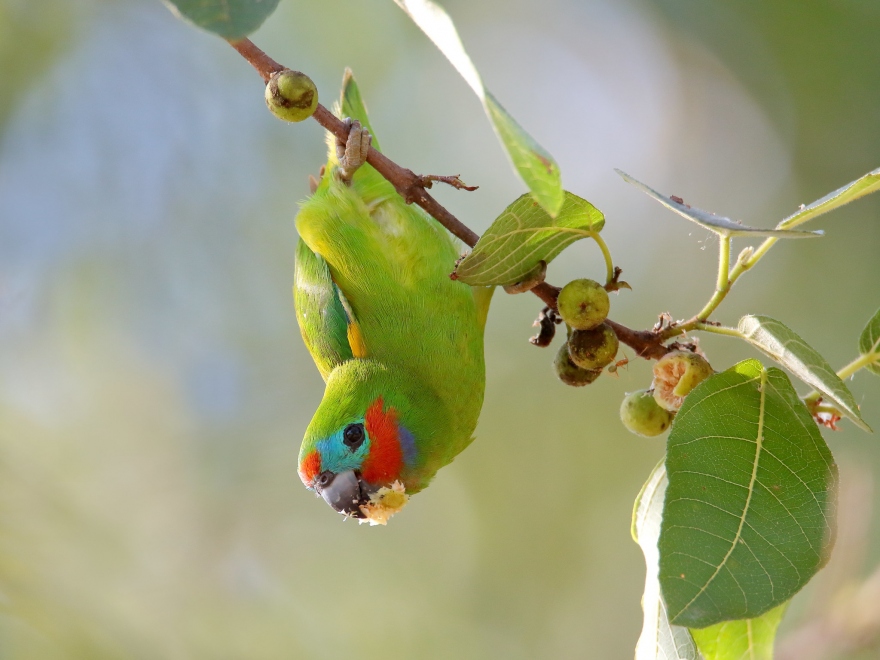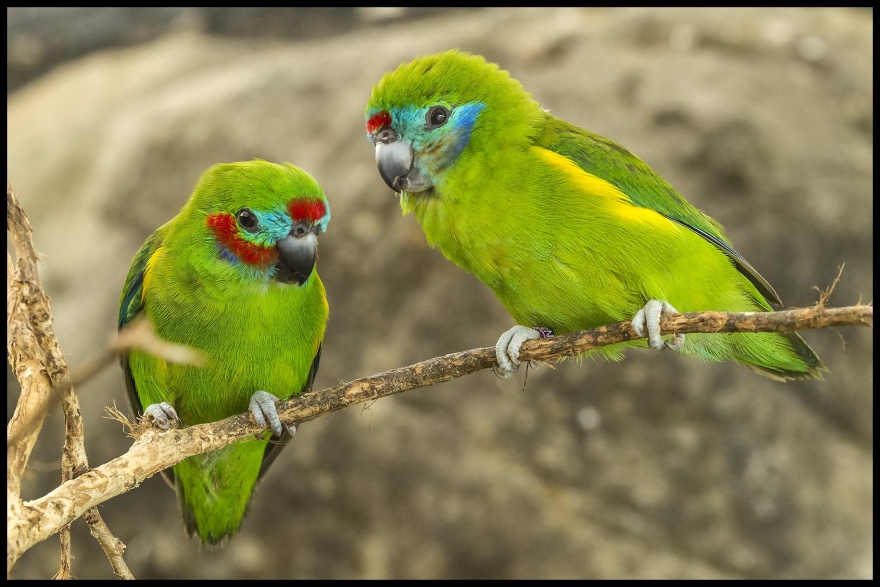Fig parrots are a family of five species found in the tropical northern parts of Australia and South-East Asia. They live almost exclusively in rainforests, where they feed on fruits, berries, insects, and flowers. As their name suggests, native figs form an important part of their diet; and anyone wishing to keep one in captivity must have access to a steady supply of them.

Care and breeding of fig parrots
They are very rare in Australian aviculture, largely due to their challenging dietary requirements. Those few specialist breeders who do keep fig parrots usually grow figs on their own property to ensure a consistent supply. Excess produce can be frozen to use as emergency food when fresh figs can’t be acquired.
Besides their complicated diet, fig parrots don’t tend to breed particularly well in captivity. This mostly comes down to breeders being unable to keep up with their strict care requirements.
Fruits spoil very quickly, especially in the warm climates these birds prefer. If their food is allowed to rot, it could expose the birds to fungal and bacterial infections. Furthermore, spoiled fruit will attract insects and other pests that could be carriers of any number of diseases. Multiple feedings throughout the day and extreme attention to hygiene is needed to successfully breed fig parrots.
Fig parrots only produce one clutch of 2-3 eggs each year. This low reproductive rate, combined with the low success rate and limited number of breeders make fig parrots immensely difficult and expensive to acquire.

Acquiring fig parrots
The double-eyed fig parrot and its two subspecies—the red-browed fig parrot and Marshall’s fig parrot—are the only species that are broadly obtainable in Australian aviculture. Don’t expect to get a pair of fig parrots for anything below $3,000.
Occasionally fig parrots will be listed for sale on Petlink or (less commonly) Gumtree, but the overwhelming number of fig parrots that change hands do so in private exchanges. Getting to know people at your local bird club is the best way to be pointed in the direction of available rare birds.
The fig parrot aviary
Fig parrots originate from the tropical northern parts of Australia. Consequently, they don’t do well with prolonged exposure to cold or draughts. In the cooler states, the aviary should be positioned to get as much sunlight and warmth as possible in winter. Insulating the aviary may be necessary.
Fig parrots are active birds and need a large aviary to ensure they get enough exercise. They should have a minimum of 4 metres of uninterrupted flying space.
A planted aviary is ideal, as the plants will provide them stimulation and (ideally) a source of food. Tropical plants they’re likely to encounter in their wild habitat are ideal.